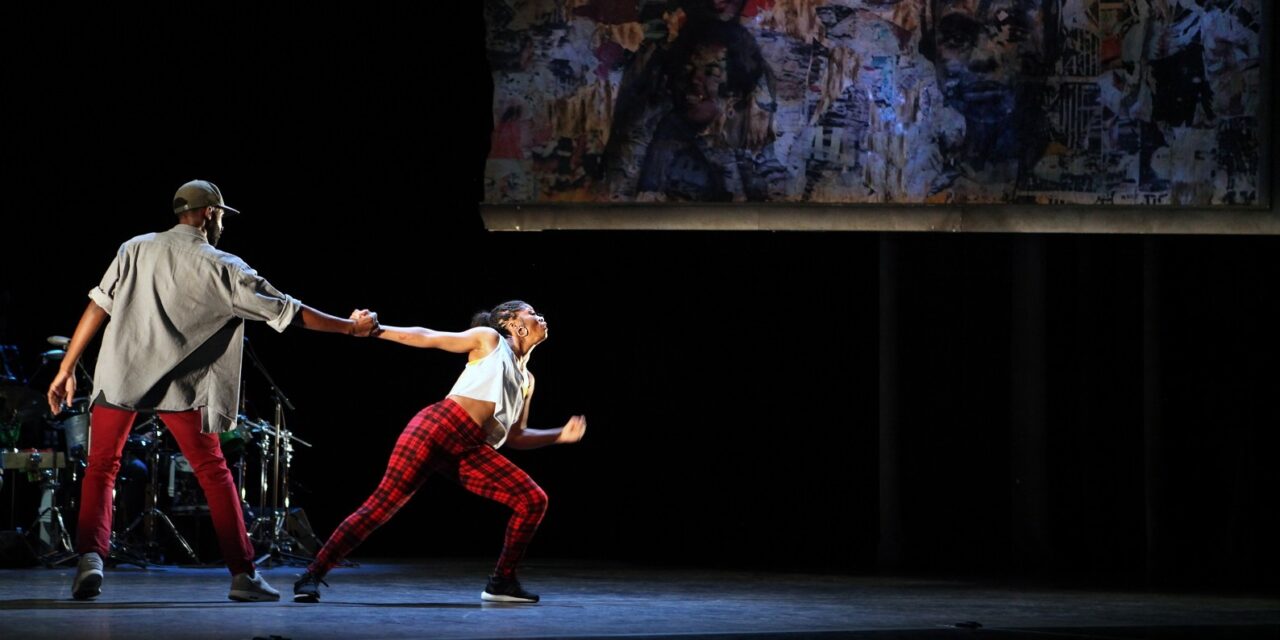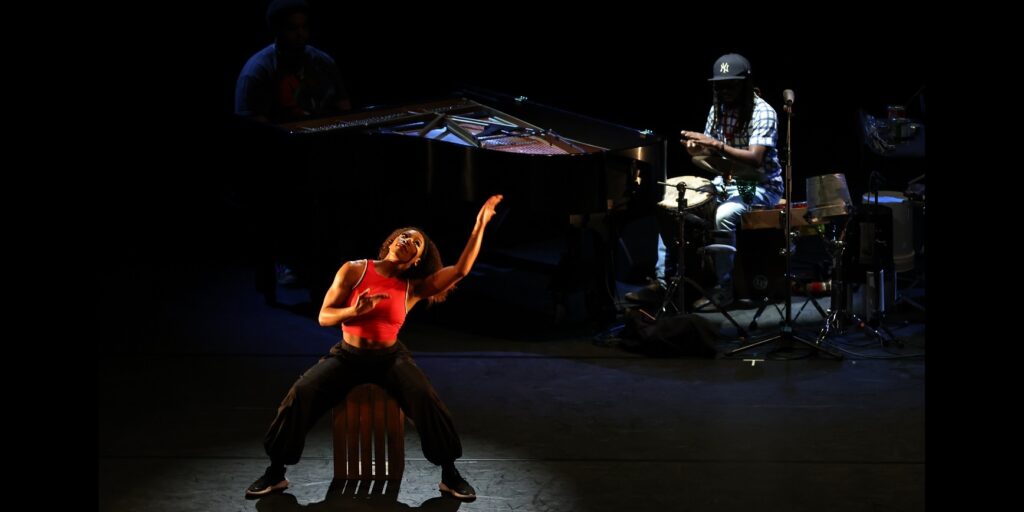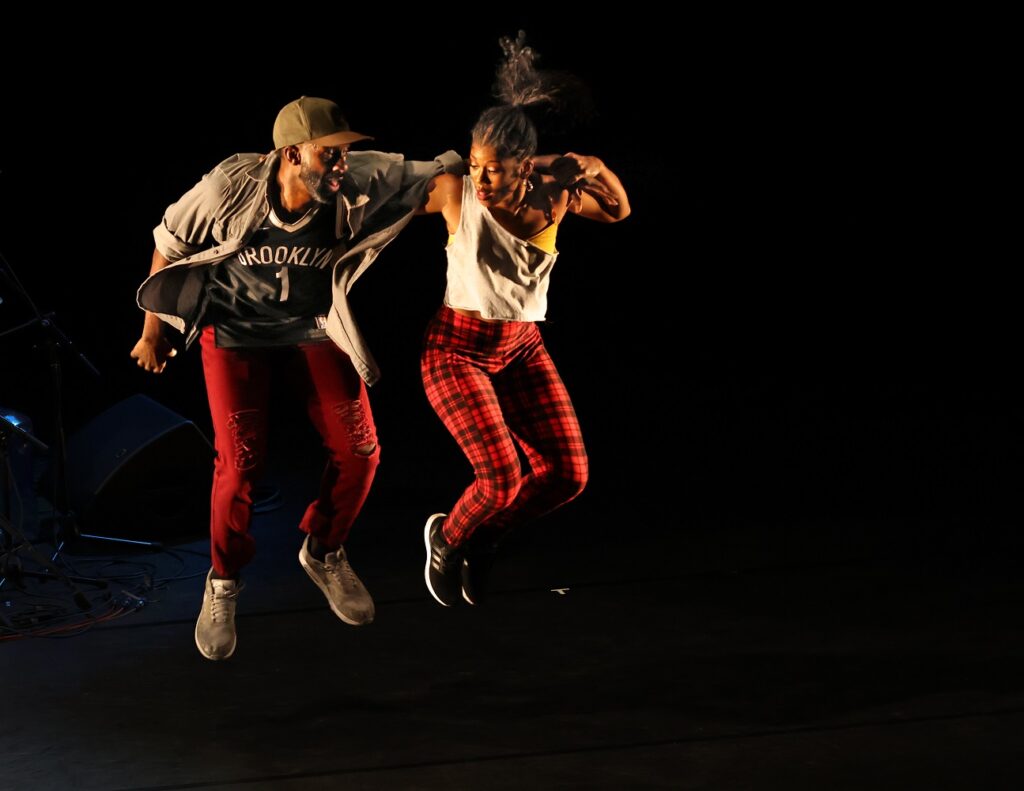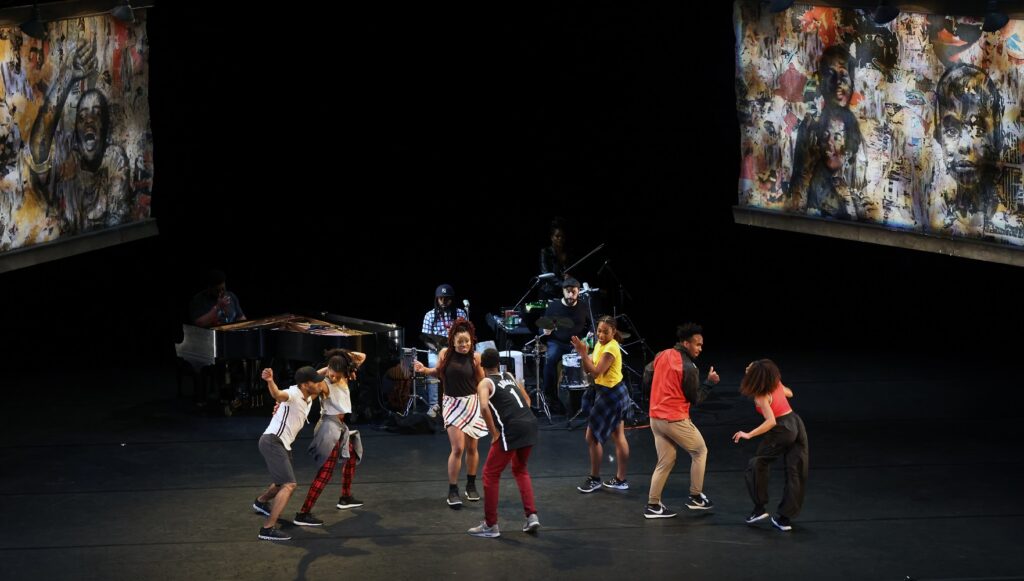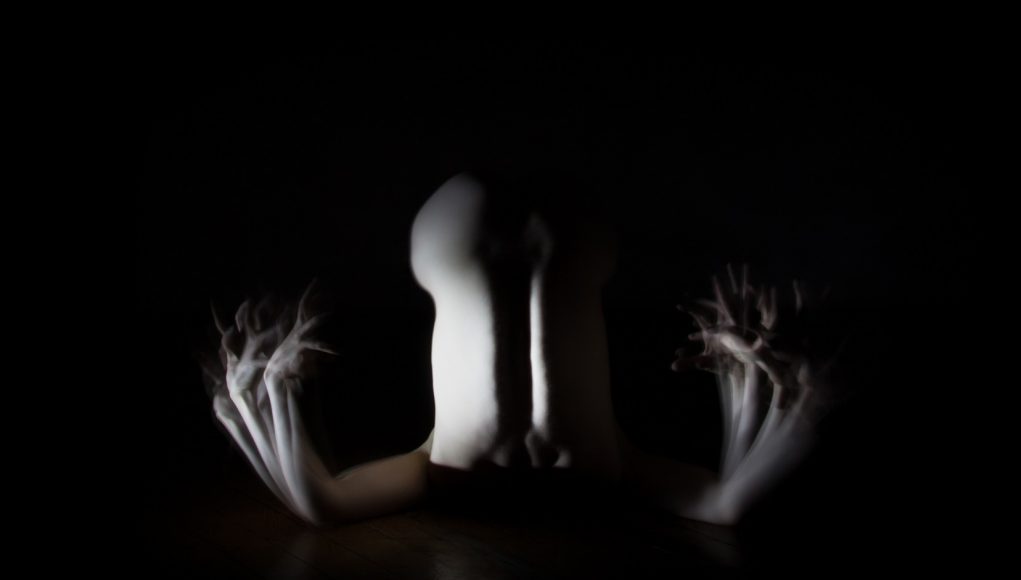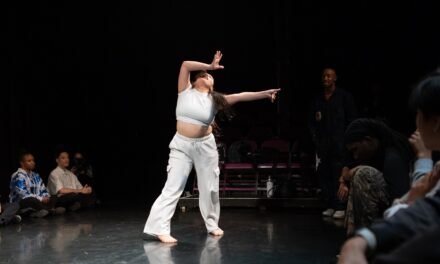I arrived at The Wallis theatre and, much to my surprise, there was no program for me to review. Reading the program is the beginning of my preparation for seeing the performance. While I quickly found that there was a QR code for the program it was too late for me to open it and skim the program prior to the performance. I’m glad I did not read the program before experiencing Camille A. Brown’s Ink.
Silence is a powerful tool. It forces the audience to listen with their eyes and watch intently at every single gesture and movement. Ms. Brown used it masterfully in the opening section of Ink. It is a solo that is riveting from the very beginning. It moves between percussion, silence, and movement that is totally connected to percussion. There are times when the movement and percussion are one. The movement is so closely interwoven with the music that they are happening simultaneously. It is amazing to watch and the addition of pedestrian gestures make it more fascinating. By the end of the solo Ms. Camille Brown has become me. I find myself, my young Black college girl with the afro, in her pedestrian gestures and movements. I see myself stirring, reaching, tapping, and placing a crown on my head.
The next section, a duet, Balance, is described as being “inspired by the hustle and Lindy hop. that displays the beauty of Black love and intimacy.” I found myself back at Spelman College with my Morehouse man. The two dancers never stopped moving and it was as if they were not only conversing with one another, but the music was an integral part of the conversation. Then those gestures came back again but on different bodies they looked different and seemed to have dissimilar intentions. The simplicity of the floor work made it especially intimate and told a story of young love in bloom… young love in a college dorm room twin bed. When the male dancer takes an Afro pick out and picks his Afro, a statement of the time period is made.
From this point on the conversation between music and movement is profound. The dancers are skilled in a variety of genres and appear to be able to do it all and the musicians are exceptional. The dancers and music move between classical and funk seamlessly. It is amazing to watch and listen to. The piano solo and violin are both exquisite and the movement is a perfect accompaniment. The dancers, females and males, jump, hop, skip, lunge, turn, effortlessly. The gestures never stopped and when the men repeated them, they did so with a ferocity and depth as they looked into the audience and at one another. The dancers are all individuals, with swagger on the dance floor, who move between pedestrian movement, African, jazz, social, hip hop, and modern dance. Their commitment to each movement phrase and connection with the music is remarkable and has the effect to of pulling the audience into the conversation and then, too soon, the dance is over.
The lights went down, and the applause rang out long and loud then we stood and looked from person to person assuming there was a second act. Well, no second act and this act was less than an hour. Everyone wanted more but when I realized this was it, I was forced to admit that it was enough for now. I think Ms. Brown said what she wanted to say. It left me thinking and reminiscing and wanting more.
Upon reading the program, after the concert, I learned that Ink is the final installation of Brown’s dance theatre trilogy about identity. It is described as a “reclaiming of African American narratives by showcasing their authenticity” and celebrating “the rituals, gestural vocabulary, and traditions that remain (from generation to generation) ingrained within the lineage of the African Diaspora.” It attempts to highlight “the space of pedestrian interactions as grounds for individuals and communities to find liberation and access their power.”
It is Camille A. Brown’s time! She is a prolific choreographer and director creating movement and dance for theater, film, television, opera, and the concert stage. She appears to effortlessly move from one artistic space to the next winning accolades and awards. Her many awards include Tony Awards for choreography and direction, a Doris Duke Artist Award, Princess Grace Award (4 times), a Guggenheim Fellowship, Drama Desk Awards, and 2 honorary doctorates. “Ink uses the power of the past and present to propel us into the future.”
To learn more about Camille A. Brown & Dancers, please visit their website.
To find out more about The Wallis, please visit their website.
Written by Leah Bass-Baylis for LA Dance Chronicle.
Featured image: Camille A. Brown & Dancers – Photo by Karen Tapia.

